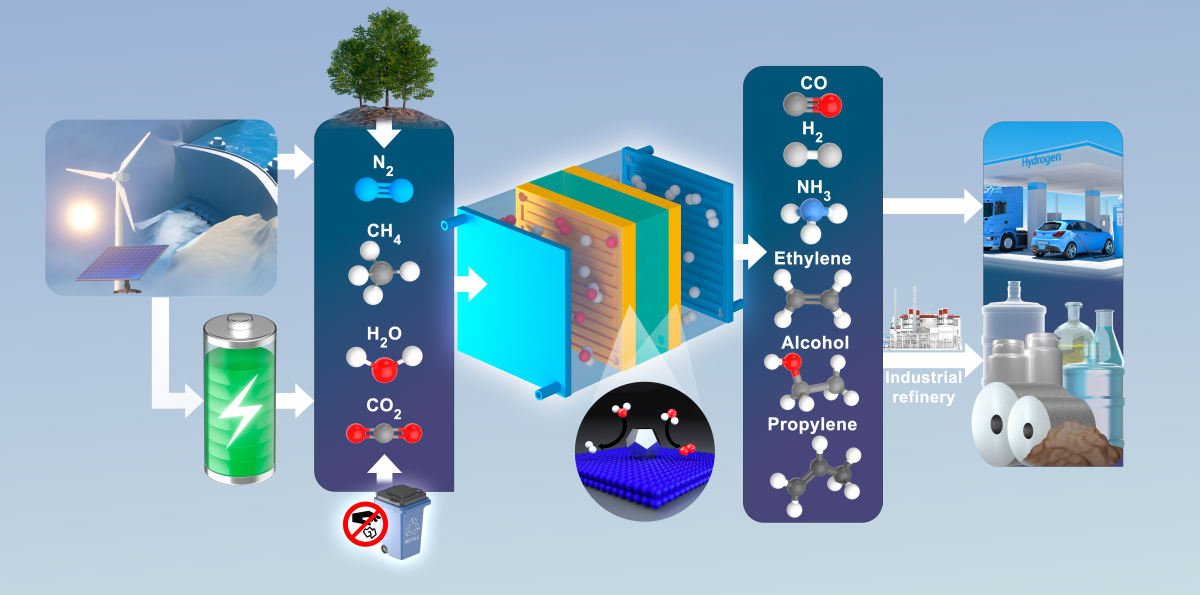OVERVIEW
The Zhang group focuses on the development of inorganic nanoscale and sub-nanoscale materials with atomically precise surfaces, interfaces and ordered architectures that enables notable physicochemical properties and emerging applications. Combining the efforts in materials synthesis, advanced characterization, and functional device engineering and simulation, we aim to derive new design principle and new synthetic methodology for critical materials in catalysis, energy, magnetism, plasmonics and biosensing.

SYNTHETIC METHODOLOGY FOR ATOMICALLY PRECISE MATERIALS
Central to functionalizing materials is our ability to synthetically control materials physical dimensions, compositions, and structures with atomic precision. We concentrate our research on the fundamental aspects of inorganic solid nucleation and formation mechanisms. Using colloidal chemistry and operando X-ray scattering and spectroscopic probes, we seek to elucidate the reaction kinetics governing the transformation from atomic monomer to nanocrystals with atomically well-defined structures and surfaces. In particular, we are interested in the nonclassical nucleation and growth phenomena mediated by magic-sized clusters and mesocrystals, and the design of new functional ligands that allow the surface atomic structure engineering of nanocrystals and the programmable formation of ordered nanocrystal superlattices.

CATALYSIS FOR SUSTAINABLE CHEMISTRY AND MATERIALS
Taking advantage of synthetic control over atomic surfaces and sites of catalytic materials, our research contributes to the fundamental understanding of structure-property relationship of nano/single-site catalysts for critical energy conversion and chemical transformation processes. Ongoing projects include the development of electrocatalysts for hydrogen economy (water electrolyzer and low-temperature fuel cells) and sustainable carbon management (CO2 reduction and biomass-derived molecule conversion) as well as the thermal catalysts for CO2 hydrogenation and light alkane dehydrogenation. A suite of operando spectroscopic tools (X-ray absorption spectroscopy and X-ray photoelectron spectroscopy), in combination with synchrotron radiation X-ray diffraction and environmental electron microscopy, are employed in our research to reveal the atomic structure of catalysts and their evolution under reaction conditions. Our in-house surface enhanced infrared absorption spectroscopy (SEIRAS) and differential electrochemical mass spectrometry (DEMS) allow us to elucidate the reaction pathways and kinetics. This mechanistic investigation over atomically precise material can be seamlessly integrated with theoretical computation for an ultimate understanding of catalyst design and optimization.

CRITICAL MATERIALS FOR MAGNETISM AND PLASMONICS
Another area of focus for the Zhang group is the dimension-dependent magnetic and plasmonic properties of nanomaterials. We are interested in the modulation of magnetic anisotropy using 1-D and 2-D metal oxide materials and their ordered assemblies. In addition, we are collaborating with bioanalytic chemists and engineers to design new strategies to modify biological objects (cells, bacteria, viruses, etc.) with functionalized plasmonic and magnetic nanocrystals to enable the efficient sensing in microfluidic devices.
SPONSORS


